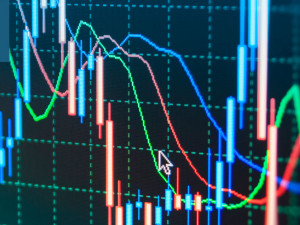
Re-joiners ignoring the obvious
Morning mid-market rates – The majors
27th June: Highlights
- Inflation becoming imbedded
- Path to inflation widening
- Lagarde using crypto to screen credit deficiencies
GBP – UK struggling, but don’t just blame Brexit
That position doesn’t consider that first the EU economy is suffering at least as much as the UK currently and, in any event, two of the most serious issues, energy shortages and supply chain issues that include transport of foodstuffs from Ukraine have no basis in Brexit.
Furthermore, it is only a matter of time before the European Union begins to pressure EU members who are not Eurozone members to either join or leave.
Catherine Mann, a member of the Bank of England’s Monetary Policy Committee, decided to use a speech she made last week. To broach the subject of inflation becoming embedded in the economy.
With Railway workers striking to support wage demands and other industries also considering industrial action, Mann may be right that inflation fuelling wage increases are set to be a significant factor in the Bank’s considerations going forward.
The moderation that the Bank has shown so far in its interest rate rises are a sure indicator of the severity of the rate at which the economy, The only other conclusion would be incompetence, and it is still too early for that to be reason.
Having seen two consecutive months of falling output, which is not far from the classic definition of recession, the economy is clearly struggling.
However, the Government, Chancellor Sunak in particular, isn’t pulling out all the stops to avoid recession. In fact, he isn’t even considering what action he could take in association with the Bank of England.
We may be closer to incompetence when talking about the Government, but Sunak either believes a recession to be inevitable and therefore not really worth his consideration, or may even think that it may not be so bad after all.
A recession will be a remedy for inflation. Prices rise when there is an imbalance between supply and demand, i.e., when too much money is chasing too few goods. A recession slows demand significantly and, hey presto, inflation falls. It is impossible for more goods to suddenly appear, so slowing demand is the unpopular answer.
Last week, Catherine Mann’s attempts to bolster Sterling had very little effect, possibly because most G7 members are in a rate hike cycle.
The pound traded in a moderate range, managing to gain only slightly. It reached a high of 1.2324 and closed at 1.2269.
Recommend our services and earn up to £75 per successful referral
USD – Fed continues to choose inflation as first priority
The belief amongst most major Wall Street banks is that the risk of a recession is roughly equal to inflation breaking and remaining above 10%.
In his biannual testimony to Congress last week, Powell took the opportunity to re-educate, or in some cases simply educate, Members of the Senate and House of Representatives in basic economics. He told them that the reason that inflation is high despite the recent slowing of the rate of increase is that supply is struggling to keep up with demand.
The Central Bank only has tools to deal with high demand. The major policy is to hike rates. Powell believes that a slowdown in real estate related activity is the first sign of a slowing economy.
He explained that rate hikes won’t do anything to lower fuel prices or the issues manufacturers and importers are facing with supply chains.
The significant difference in this economy, compared with the past, is that workers do not fear losing their jobs. In fact, the opposite is true. Jobs are plentiful and if workers want to hop jobs to earn more, they can.
That is the core of the Fed’s problems. They are hoping that the June Employment report, when it is released on July 8th, will see a slowdown in the number of new jobs created.
With new weekly jobless claims remaining around 200k despite moving more than ten percent above that level in the latest report, the labor market remains tight and that is what is feeding inflation.
Last week, data was released which showed that existing home sales fell by 3.4% in May versus 2.6% in April.
Consumer confidence remains a key to the Fed’s policy. The Michigan Consumer Confidence Survey, which is the Fed’s key indicator, fell slightly from 50.2 to 50.
This week, Durable Goods Orders for May will be released. This is an indicator of the longer-term strength of the economy. Orders are expected to rise but by only 0.1%
House price data will also be released. House price inflation is still rising at a rate that is uncomfortable for the Fed.
Last week, the dollar index fell to a low of 103.86, and closed at 104.10.
EUR – Spreads will continue to widen
Having been the only lender to several indebted economies for the entire Pandemic and in some cases even longer, why would it be a surprise that when that support is removed, bond prices fell and the rates these nations have to pay were both higher, significantly more so than their more affluent Eurozone neighbours.
Fragmentation is a new word that has entered the Eurozone lexicon over the past few weeks as the ECB first agreed to remove tech support of its PEPP programme, then decided that the time has come to raise rates.
Fragmentation is the difference in spread paid by the weakest or most indebted, in terms of debt to GDP, when compared to the strongest. The European Commission, in the wake of the 2012 crisis, adopted far tougher measures to ensure that borrowing in terms of budget deficit and debt to GDP ratios remains within strictly controlled parameters.
With the arrival of the Pandemic, it became impossible for these regulations to be maintained, but now it will be virtually impossible to get several nations back in line.
Italy is the main concern, its banking sector remains in disarray, woefully short of capital and facing bad debt numbers that dwarf other nations in terms of capital adequacy.
Italy’s Prime Minister is of course Mario Draghi, who spent eight years trying to arrest the collapse of the Eurozone, only to go home to face even tougher challenges. Brussels is expecting Draghi to come up with a miracle cure for Italy that may be adopted for the rest of the region.
All that is left to be decided is by how much rates should rise in the first hike. Lagarde believes that it should be a dip of a toe into the water, while the Frugal five want to dive straight in. The choice is between twenty-five and fifty basis points, and it is currently impossible to call.
Last week, region wide output data was released and it showed a fall close to the 50 level, below which would indicate a contracting economy.
This week, Consumer Confidence data will be released. It is expected to remain unchanged at -23.6. The rate of unemployment is expected to remain unchanged at 6.8%.
The euro continues to have one eye on parity with the dollar.
Last week, it managed to rally to a high of 1.0605, but it is continuously running into sell orders. It closed at 1.0554. Above 1.05, the threat of a fall to parity looks less likely but as Central Bank meetings loom, the short-term fate of the single currency may rest in the hands of the ECB.

About Alan Hill
Alan has been involved in the FX market for more than 25 years and brings a wealth of experience to his content. His knowledge has been gained while trading through some of the most volatile periods of recent history. His commentary relies on an understanding of past events and how they will affect future market performance.”



